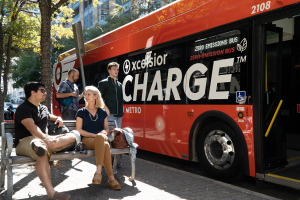 A recent report from Bloomberg New Energy Finance highlights the urgent need for policymakers to prioritize truck electrification, which could have sweeping benefits for the climate, public health, and American jobs. The annual EV outlook includes (for the first time) a comparison of the zero-emission vehicle adoption path needed to achieve net-zero by 2050, as well as a business-as-usual scenario where fleet operators continued to externalize the health and climate damage from operating combustion trucks.
A recent report from Bloomberg New Energy Finance highlights the urgent need for policymakers to prioritize truck electrification, which could have sweeping benefits for the climate, public health, and American jobs. The annual EV outlook includes (for the first time) a comparison of the zero-emission vehicle adoption path needed to achieve net-zero by 2050, as well as a business-as-usual scenario where fleet operators continued to externalize the health and climate damage from operating combustion trucks.
For large trucks and buses, the difference between these scenarios is stark. According the BNEF summary, “by 2040, zero-emission medium and heavy commercial vehicles are 95% of sales in our Net Zero Scenario, but just 30% in the ETS. This represents an ‘adoption gap’ of 65 percentage points in 2040.”














